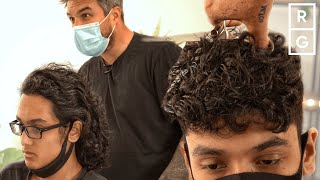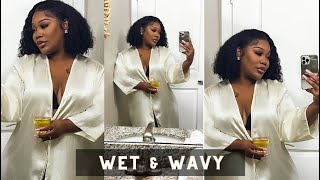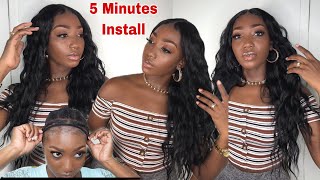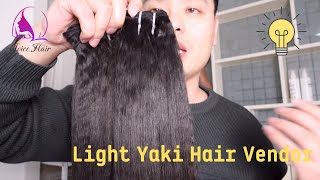How to get natural looking tight curls
- Posted on 28 October, 2021
- Curly Hairstyles
- By Azra Kassam
We talk about how to achieve loose waves and curls all the time, but what about those more dramatic, tight curls? If you’re looking to create a striking hairstyle, loose curls or waves sometimes just don’t cut it. We’ve teamed up with our friend Ana to show you how to achieve dramatic yet natural looking tight curls. To amp up the look even more, Ana uses her Ombre Blonde Hair extensions to add even more volume to an already volumized look. Go big or go home, right?
Do you have curly or straight hair? Do you have any tips to creating tight curls? Be sure to let us know in the comments below.

Different types of curls
First, let’s talk about different types of curls and waves. Curly and wavy hair is created according to the shape of the follicle that your hair grows out of. The more oval shaped the follicle, the more curly the hair will be. Likewise, if the follicle is more circular, the hair will grow straight. Most curly and wavy haired women have a mixture of textures on their head, which explains why some sections of your hair carry a beautiful wave, while others only have a slight bend and need to be fixed with hot tools.
So, wavy 2A, curly 3A, 3B, 3C...what does it all mean? Hair texture is classified by subcategories of letters and numbers. Straight hair is classified as a 1, wavy hair is a 2, curly hair is a 3, and kinky or coily hair is a 4. These categories can be further classified according to the diameter of your curl pattern. A’s have the widest curl pattern, while C’s have the tightest. This classification system makes it easier for you to understand your hair type and texture, so that you can choose the right products for your hair and communicate more clearly with hairdressers and stylists.
Wavy Hair
Since there are more bends in the hair, natural oils from the scalp do not travel easily down the hair shaft, therefore, if you have wavy hair, you may find that your hair is prone to dryness and tends to frizz easily. Consistent, deep conditioning treatments and hair masks are key to keeping your wavy hair frizz-free, shiny, and smooth. Wavy hair is classified as a 2, and subcategorized as follows:
Wavy 2A
View this post on Instagram
This is the least wavy hair texture—almost straight with a slight bend.
Wavy 2B
View this post on Instagram
This hair texture has more bends and looks like those ever-popular loose, textured, beachy waves achieved with a 1 ½ inch curling wand. If your hair naturally looks like this, congratulations! You likely have the most coveted hair texture around.
Wavy 2C
View this post on Instagram
This is the waviest texture, and usually the least shiny of all wavy textures and prone to dryness. Wavy 2C hair looks like it has been curled with a smaller curling wand, about 1 ¼ inch.
Curly Hair
Curly hair is classified as a 3, with a definite S shape if pulled taught, and the hair strand usually springs back to its curly state. Since curly hair is the most prone to dryness and frizz, proper care is crucial to maintaining healthy, vivacious curls. If neglected, you may find that your curls look dull and damaged.
Curly 3A
View this post on Instagram
This hair texture has bigger loose S shapes throughout, much like if you were to curl your hair with a 1 inch curling wand into princess curls.
Curly 3B
View this post on Instagram
This hair texture has a definite tight ringlet shape, springing back instantly if pulled.
Curly 3C
View this post on Instagram




